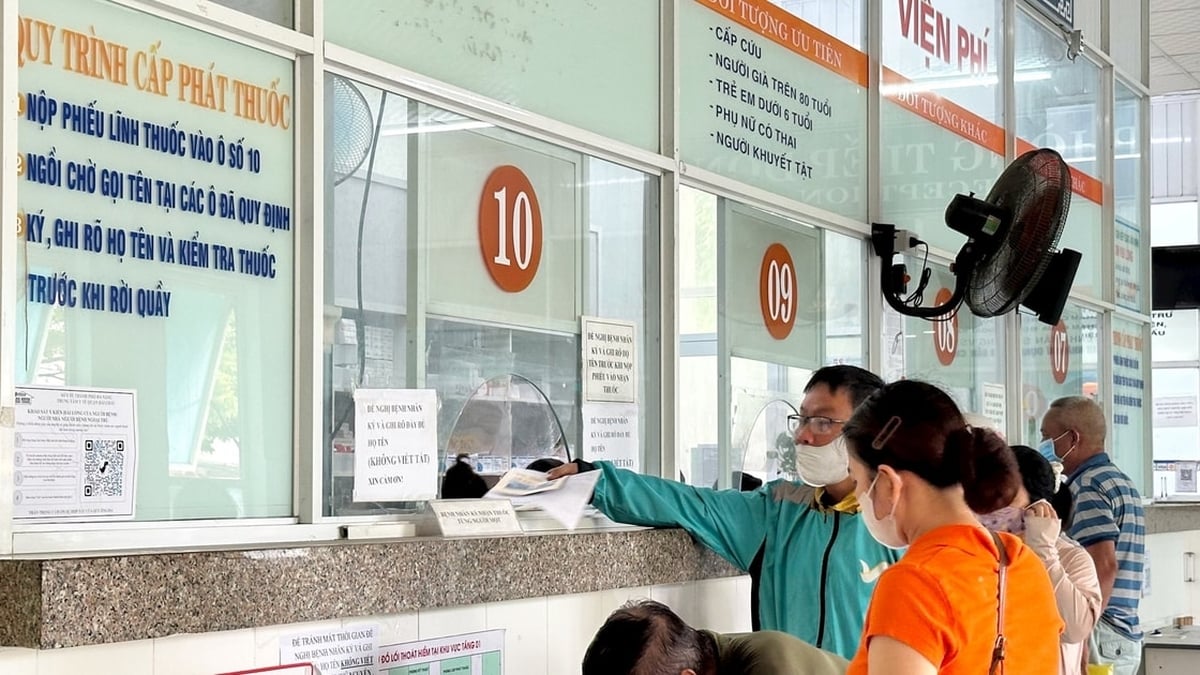Causes of stomach polyps
Stomach polyps can occur equally in men and women of all ages. However, they tend to be more common in older people, especially those over 65. Meanwhile, certain types of polyps, such as adenomatous polyps, are more commonly found in middle-aged women.
There are many causes of stomach polyps, some of which have been linked to increased risk, including:
- Chronic gastritis.
- Helicobacter pylori infection.
- Pernicious anemia.
- Long-term damage to the stomach lining, such as from an ulcer.
- Long-term use of proton pump inhibitors, such as omeprazole.
In addition, genetic factors also play a role in the formation of polyps. A person may be at higher risk of developing gastric polyps if someone in the family has had them. At the same time, the possibility of developing the disease also increases if there are other genetic diseases of the digestive tract.

Gastric polyps can occur equally in men and women of all ages.
Common types of gastric polyps
- Hyperplastic polyps: This is the most common type of polyp in people with gastritis, forming as a chronic inflammatory response in the cells lining the inside of the stomach. The bacteria HP is the main cause of this type of polyp. Most hyperplastic polyps are not likely to "turn into cancer", but polyps larger than 2cm in diameter have the risk of becoming cancerous.
- Adenomatous polyps: Adenomatous polyps form from glandular cells on the inner lining of the stomach. They occur in people with a rare genetic condition called familial adenomatous polyposis and in people who regularly take medications to reduce stomach acid. Although not a major concern, people with adenomatous polyps larger than 1cm in diameter need to have them removed because they can become cancerous.
- Adenoma: Adenoma is the most common type of stomach polyp, but it is also the type that is most likely to become stomach cancer. Adenomas are associated with gastritis and familial adenomatous polyposis, meaning that if a family member has adenoma, the risk of other family members also having the disease is higher than if no family member has the disease.
Diagnosis of gastric polyps
The best method to diagnose gastric polyps is a gastroscopy. Gastroscopy allows the detection of very small polyps of about 1-2 mm, determining the location, size, number, shape and complications of polyps such as ulcers and bleeding. Through endoscopy, doctors can perform polyp biopsies to test cells to diagnose what type of cells the polyps belong to and whether there are complications.
Symptoms of gastric polyps
Stomach polyps often do not cause any signs or symptoms. However, as a stomach polyp grows larger, an open sore may develop on its surface. Rarely, a polyp can block the passageway between the stomach and small intestine. If a blockage occurs, signs and symptoms of stomach polyps include:
- Pain or tenderness when pressing on the abdomen
- Nausea
- Blood in stool
- Anemia
Treatment of gastric polyps

Stomach polyps usually do not cause any signs or symptoms.
- If the polyps are small, they may not be treated. These polyps usually do not cause signs or symptoms and rarely become cancerous. Your doctor may recommend periodic monitoring.
- If the polyps are large. These polyps may need to be removed. Most stomach polyps can be removed during an endoscopy.
- Adenomas, also known as polyps, can become cancerous and are usually removed during endoscopy.
- If the polyps are related to familial adenomatous polyposis. These polyps are removed because they can become cancerous. Your doctor will likely recommend a follow-up colonoscopy to check for polyps periodically.
- Treating H. pylori infection. If you have gastritis caused by H. pylori bacteria in your stomach, your doctor will likely recommend antibiotic treatment. Treating the H. pylori infection can cause hyperplastic polyps to disappear, and may also prevent polyps from coming back.
Summary: Gastric polyps are a common problem, although the vast majority of gastric polyps, more than 90%, are non-cancerous, certain types of polyps require further examination to ensure that there are no precancerous cells or a high risk of true malignant transformation. Therefore, regular check-ups and screening, especially for middle-aged or high-risk subjects, are necessary for early treatment and long-term improvement.
Source: https://giadinh.suckhoedoisong.vn/polyp-da-day-co-nguy-co-ung-thu-khong-172241001154948645.htm




















































![[Maritime News] More than 80% of global container shipping capacity is in the hands of MSC and major shipping alliances](https://vphoto.vietnam.vn/thumb/402x226/vietnam/resource/IMAGE/2025/7/16/6b4d586c984b4cbf8c5680352b9eaeb0)












































Comment (0)